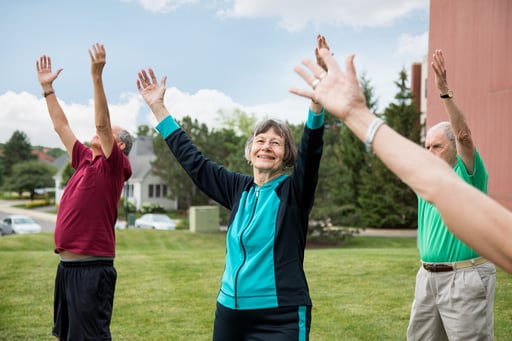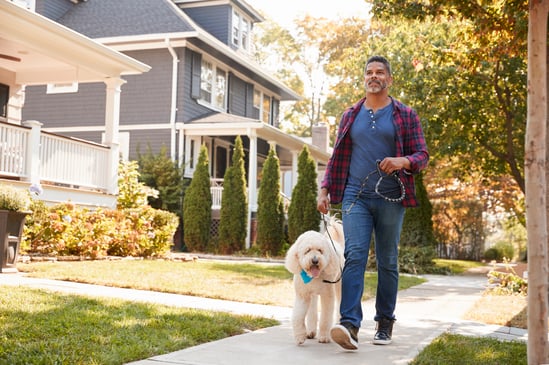.jpg?width=413&height=246&name=GettyImages-1392938623%20(1).jpg) Striving to achieve 10,000 steps a day is a great way to move your body more and improve your overall health. Don't let the thought of 10,000 steps hinder you from trying. Start small and work your way to 10K a day this month!
Striving to achieve 10,000 steps a day is a great way to move your body more and improve your overall health. Don't let the thought of 10,000 steps hinder you from trying. Start small and work your way to 10K a day this month!
10 Tips for Walking 10,000 Steps a Day:
1. Get a pedometer or fitness tracker: Wearable devices like Fitbit, Apple Watch, or smartphone apps can help you track your daily steps. These tools can motivate you to reach your goal and provide real-time feedback on your progress.
2. Start small: If you're not used to being active, begin with a lower step count and gradually work your way up to 10,000 steps a day. Set achievable milestones, such as adding 1,000 steps per week until you reach your goal. Try breaking up your activity into manageable chunks throughout the day.
3. Find a walking buddy: Walking with a friend, family member or co-worker can make the activity more enjoyable and help you stay motivated. You can encourage each other to reach your step goals.
4. Make it part of your routine: Incorporate walking into your day. For example, use the stairs instead of the elevator, park farther away from your destination, or take a walk around your neighborhood after dinner.
5. Set reminders: Use alarms or notifications on your phone or fitness tracker to remind you to get up and move throughout the day. This can be particularly helpful if you have a sedentary job. Consider scheduling it into your workday or even ask your team if they would like to have a walking meeting.
6. Choose scenic routes: Walking in pleasant surroundings can make the experience more enjoyable. Explore parks, nature trails, or other scenic areas in your community.
7. Mix it up: Vary your walking routine to avoid boredom. Try different routes, paces, or include some uphill terrain. You can also listen to music, podcasts, or audiobooks to make the time pass more quickly.
8. Track your progress: Each day log your daily step count and review your achievements regularly. Celebrate your milestones to stay motivated.
9. Stay consistent: Consistency is key to achieving and maintaining your 10,000-step goal. Make walking a habit and prioritize it in your daily life.
10. Adjust your goal as needed: Your schedule and fitness level differ from the next person. If 10,000 steps a day feels unattainable or too easy, adjust accordingly to suit your needs.
Your main goal is to be active daily and make it a daily habit. While 10,000 steps is a common goal, any increase in daily activity can have significant health benefits. What is your favorite app or fitness device for tracking steps?


.jpg?width=426&height=284&name=GettyImages-623825560%20(1).jpg) Why 10,000 steps a day?
Why 10,000 steps a day? 
.jpg?width=383&name=GettyImages-936397332%20(1).jpg) Walking everywhere is slowly becoming a bigger trend, specifically in states that it never used to be. As fitness trackers are being used more and more, step challenges are increasing both at work and at home. Research is discovering the benefits of walking and ensuring that people are getting their steps in every day. Walking is one of the best means to reach physical activity recommendations and by meeting those recommendations, individuals lower their risk for diseases such as cardiovascular disease, diabetes, obesity, and many more.
Walking everywhere is slowly becoming a bigger trend, specifically in states that it never used to be. As fitness trackers are being used more and more, step challenges are increasing both at work and at home. Research is discovering the benefits of walking and ensuring that people are getting their steps in every day. Walking is one of the best means to reach physical activity recommendations and by meeting those recommendations, individuals lower their risk for diseases such as cardiovascular disease, diabetes, obesity, and many more.



